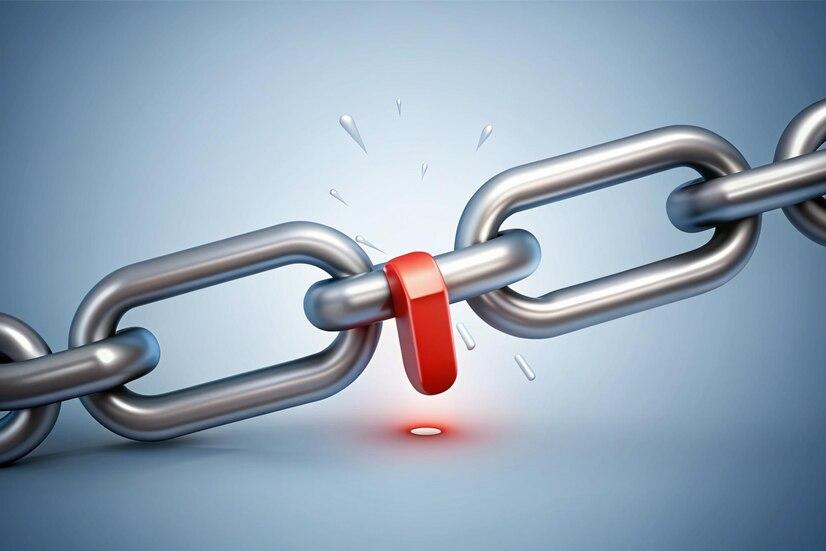



Table of Contents
- Introduction
- Types of Encroachments
- Causes of Encroachment
- Resolving Encroachment Disputes
- Impact of Encroachments on Property Transactions
- Conclusion
- Faq's
Introduction
Encroachment in real estate refers to a situation where one property owner intrudes onto the property or land of another owner without permission. This typically involves the physical extension of a structure or object, such as fences, buildings, or driveways, into a neighbor's land. Encroachments can cause disputes between property owners and may affect property rights, usage, and even the sale of the property.
Types of Encroachments
In real estate, encroachments refer to the unauthorized extension of structures or land use beyond legal property boundaries. These encroachments can take various forms, each posing unique challenges for property owners. Below are the common types of encroachments:
Structural Encroachment
This occurs when a physical structure, such as a building or fence, crosses into a neighbor's property. Examples include:
Fences: A fence built over the boundary line into the adjoining property.
Buildings: A home or garage that is constructed partially over the property line.
Sheds or Outbuildings: Storage sheds or small structures that extend into a neighbor's yard.
Landscaping Encroachment
This type of encroachment involves plants, trees, or landscaping features extending into neighboring property:
Trees and Hedges: Tree branches or roots growing into a neighboring yard.
Gardens or Flower Beds: Landscaping that crosses property lines, such as garden borders or decorative plants.
Driveways or Walkways: When paths or driveways are extended onto adjacent property without permission.
Overhead Encroachment
Encroachment doesn't just happen on the ground; it can occur overhead when structures or extensions cross property lines above ground level. Examples include:
Balconies or Overhangs: A balcony or roof overhang extending into a neighbor's airspace.
Wires and Cables: Utility lines or cables that cross into the airspace of an adjacent property.
Subsurface Encroachment
Encroachments can also happen below ground level, affecting subsurface areas of neighboring property:
Underground Pipes: Sewage, water, or gas lines running beneath a neighbor's property without permission.
Basement or Foundation: If the foundation or basement of a building extends beyond property lines underground.
Temporary Encroachment
Some encroachments are temporary but still unauthorized, such as:
Scaffolding: Construction scaffolding placed on a neighboring property without consent.
Storage: Temporary storage of building materials or equipment on adjacent land. Encroachment
Encroachment
Causes of Encroachment
Encroachments occur when one property owner intrudes on another's land without permission. These intrusions can arise from various causes, often rooted in miscommunication, oversight, or deliberate actions. Here are some common causes of encroachment:
Inaccurate Property Surveys
Survey Errors: Mistakes made during property surveys can lead to incorrect boundary lines being recorded, causing structures or land use to extend beyond the legal property limits.
Outdated Surveys: Older or outdated surveys might not reflect recent changes or improvements, leading to unintentional encroachments.
Construction Errors
Building Mistakes: Errors during construction, such as miscalculations or poor planning, can result in structures, like fences or buildings, extending over property lines.
Improper Site Planning: Failure to properly plan or measure the site during construction can lead to encroachments into neighboring properties.
Misunderstanding Property Boundaries
Lack of Awareness: Property owners may not be fully aware of their property boundaries, leading to unintentional encroachments when building or landscaping.
Miscommunication: Misunderstandings between property owners regarding boundary lines or property lines can result in structures or improvements encroaching on adjacent properties.
Land Use Changes
Expanding Land Use: Changes in how land is used, such as adding new landscaping or expanding driveways, may inadvertently cross into neighboring properties.
Overgrown Plants: Trees or shrubs that were initially within boundary lines may grow and encroach upon adjacent properties over time.
Deliberate Encroachment
Intentional Expansion: Property owners may intentionally extend structures or land use beyond their property boundaries, hoping their neighbors will not notice or object.
Land Grabs: In some cases, property owners may attempt to claim additional land through adverse possession or other means by encroaching on neighboring properties. Causes Of Encroachment
Causes Of Encroachment
Resolving Encroachment Disputes
Encroachment disputes arise when one property owner's structure or use of land extends onto a neighboring property. Resolving these disputes requires a thoughtful approach to ensure fairness and compliance with legal standards. Here are effective strategies for resolving encroachment disputes:
Open Communication
Initiate Dialogue: Start by discussing the issue directly with the encroaching party. Clear communication can often resolve misunderstandings and lead to amicable solutions.
Document Conversations: Keep records of all communications regarding the encroachment to provide evidence if needed later.
Professional Boundary Survey
Hire a Surveyor: Engage a professional land surveyor to accurately determine property boundaries. This helps clarify whether an encroachment exists and the extent of the intrusion.
Obtain a Survey Report: Use the survey report as a basis for discussions or legal actions, ensuring that both parties have a clear understanding of the property lines.
Negotiation and Mediation
Negotiate Terms: Discuss potential resolutions, such as altering the encroaching structure, granting easements, or compensating the affected party.
Seek Mediation: If direct negotiations fail, consider mediation with a neutral third party who can facilitate a fair agreement between the parties.
Legal Remedies
Review Property Deeds: Check property deeds and local zoning laws to understand property rights and possible legal remedies.
File a Lawsuit: If negotiations and mediation fail, consider filing a lawsuit to seek legal resolution. This might involve seeking an injunction to remove the encroachment or requesting damages.
Adverse Possession
Evaluate Claims: In cases where the encroachment has been in place for an extended period, assess whether the encroacher could claim ownership through adverse possession laws.
Legal Consultation: Consult a real estate attorney to understand the implications of adverse possession and how it might affect the dispute. Resolving Encroachment Disputes
Resolving Encroachment Disputes
Impact of Encroachments on Property Transactions
Encroachments can significantly affect real estate transactions, potentially complicating the buying, selling, and overall management of property. Here's how encroachments impact property transactions:
Property Value
Decreased Value: Encroachments can reduce the market value of a property. Buyers may perceive encroachments as legal risks or complications, leading to reduced offers or lower selling prices.
Appraisal Issues: Property appraisers might adjust their valuations based on the presence of encroachments, affecting the final appraisal report and the overall sale price.
Sale Negotiations
Extended Negotiations: Encroachments can lead to prolonged negotiations between buyers and sellers. The affected parties might need to agree on how to address the encroachment before finalizing the transaction.
Repair or Compensation: Buyers might request repairs or compensation for the encroachment, leading to additional negotiation on price adjustments or contractual terms.
Title and Ownership
Title Issues: Encroachments can lead to title disputes, affecting the transfer of ownership. Sellers may need to resolve encroachment issues or address title insurance concerns before completing the sale.
Legal Claims: In some cases, encroachments might lead to legal claims against the property's title, which can complicate the closing process and potentially delay or cancel the transaction.
Closing Process
Delays: Resolving encroachment issues can delay the closing process. Additional steps, such as obtaining legal opinions, modifying contracts, or addressing boundary disputes, can extend the time needed to finalize the sale.
Contract Modifications: The purchase agreement may need to be revised to include provisions for handling the encroachment, such as agreeing to future boundary adjustments or legal resolutions.
Buyer Perceptions
Buyer Hesitation: Potential buyers might be hesitant to purchase a property with known encroachments, fearing future disputes or legal complications. This hesitation can lead to fewer offers or lower bids.
Marketability: Properties with unresolved encroachment issues may be less attractive to buyers, impacting the marketability and speed of the sale.
Conclusion
Encroachments can have a profound impact on property transactions, affecting property value, negotiation processes, and legal aspects of the sale. Addressing encroachments effectively and transparently is crucial to ensure smooth transactions and protect the interests of both buyers and sellers.
explore further
Latest from Encyclopedia
More from Interactions
Resources
Dwello, for every home buyer, is a way to go from 'I feel' to 'I know', at no extra cost.




